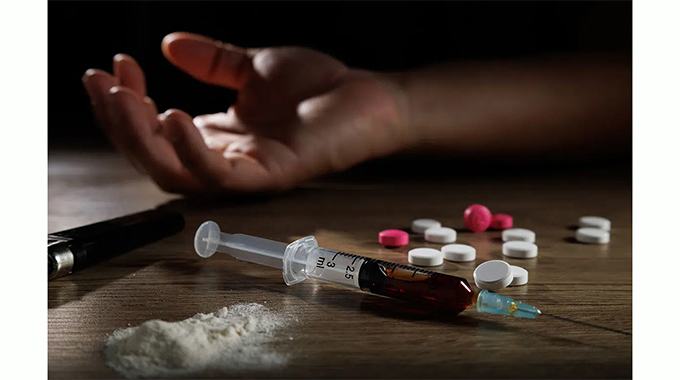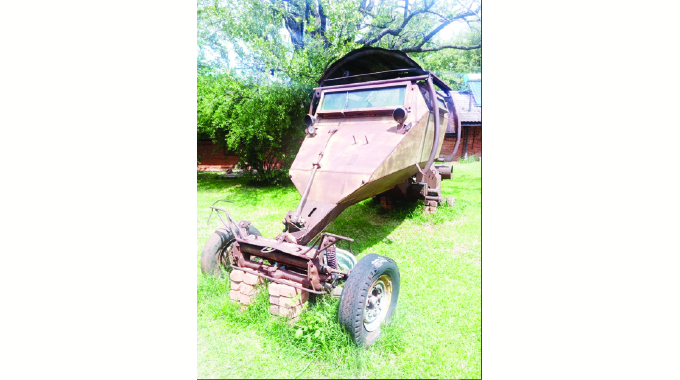EDITORIAL COMMENT: Rampant drug abuse among local sportsmen worrying

THERE is a growing cancer among the sportsmen and women in Zimbabwe over the last few years.
Cases of drug and substance abuse have been on the rise and this plague has destroyed the careers and lives of many promising athletes.
It’s so sad that some of the best talents we have in the country have also fallen victim to this scourge. The problem has manifested mostly in football where many current and former footballers last year appeared in court after being found in possession of dangerous and prohibited drugs.
The cases suggested a serious challenge of drug peddling within the sector. And, it should not come as a surprise if the interview given by Philani “Beefy” Ncube last year is anything to go by.
Ncube made a rather sensational claim that about 80 percent of the local football players were abusing drugs and dangerous substances.
Although it is difficult to ascertain, the idea that he meant to drive home was that drug abuse had become rampant among footballers.
Apart from marijuana, football players have turned to BronCleer, methylenedioxymethamphetamine — commonly known as mutoriro — and many other dangerous substances.
The most worrying part is that some of the footballers themselves have turned drug peddlers, who can ensure constant supply to their peers.
The case in point is that of former Harare City players Jerry Chipangura who was recently jailed 14 months by the Harare Magistrates Court after he was found in possession of 40g of methylenedioxymethamphetamine.
Meth, which is popular with many urban youths, is classified as a dangerous drug in Zimbabwe. His former teammate at Harare City, Nathan Ziwini, also appeared before the courts to answer charges of illegally dealing in drugs after he was found in possession of crystal methamphetamine worth US$10 000.
Then in October last year, former Castle Lager Premiership footballer Devine Sena was found with two sachets of cocaine said to be worth US$640 000 in street value.
Sena was also charged for illegal possession of a fire-arm.
This probably is just the tip of the ice-berg. There could be more of them dealing in illegal drugs and the network usually is difficult to dismantle.
Some football fans, who are close to these players, are also alleged to be supplying the drugs in this web of destruction.
There have been many reported cases of footballers that have been abusing drugs and dangerous substances.
Drug use among players increased during the long Covid-19 enforced break and many players are finding it difficult to return to their normal lives because of the addictive nature of the drugs.
The Footballers Union of Zimbabwe, which represents the interests and welfare of all local footballers, has acknowledged the prevalence of the scourge among their members and have been actively campaigning against the scourge.
Sadly, this problem is found among both the male and female footballers, and they are doing this to their own ruin.
Something must be done to rescue this generation of footballers from total ruin.
Local authorities need to take deliberate measures aimed at arresting the scourge.
Local sports medicine expert Nicolas Munyonga, who is also the Zimbabwe Olympic Committee Medical Commissioner, said in a previous interview that plans were in place to curb drug abuse in the game, but funding was their biggest challenge.
“You will find out that as a country we do a lot of out-of-competition testing that is funded by the Ministry of Sport and the world anti-doping agency on selected sport codes or teams preparing for international competitions so that we comply with the requirements.
“We have submitted proposals and budgets to the PSL to be able to carry out in-competition testing. We also carry out education training programmes through various education officers in the country.
“So there are activities but they are not at a high level because of the financial aspect. A single doping test costs around US$500, including transportation and sample collection.
“So that is a huge budget but l know the ministry is trying to provide some budget through ZOC for testing to happen,” said Munyonga, who has also led the Africa Zone V1 Region Anti-doping organisation.
Cricketer Brendan Taylor admitted to taking hard drugs, leading to a lengthy ban by the International Cricket Council.
Taylor has since undertaken rehabilitation “to get clean and get my life back on track” after he was led into the vice by corrupt bookmakers. He said he experienced “hell” for years because of his problems with “drugs and narcotics”.
From an idol adored by many, Taylor experienced a nasty fall from grace. Upcoming sportsmen and women should take lessons from the sad stories and avoid falling into the same trap.
Of course illegal drug and substance abuse by young people is currently posing a big challenge to the nation. Illicit drug use in Zimbabwe has reached alarming levels and is affecting a lot of people.
According to the World Health Organisation, prevalence of drug Abuse in Zimbabwe was 57 percent, 43 percent being among youths and 14 percent among adults last year.
The country also does not have public institutions dedicated to rehabilitating drug addicts, leaving rehabilitation in the hands of very few private players whose costs are prohibitive.










Comments